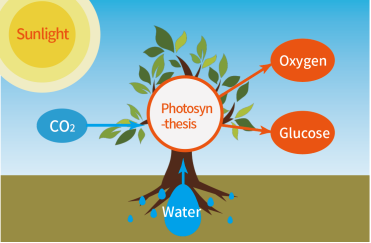Sansi LED: Sustainable LED Lighting and Integrated LED Display
Delivering premium and professional LED Display, LED Lighting, Smart City Integration solutions, trusted by over 60,000 companies worldwide everyday. From industrial lighting to commercial lighting, from outdoor advertising to XR & VR production, Sansi LED greatly improves the quality and sustainability of your business with 30 years of expert experiences.
Light plays a crucial role in influencing various aspects of plant growth and development, including seed germination, geotropism, phototropism, and gene expression. It serves as both energy and signaling factor, enabling plants to convert carbon dioxide and water into organic matter through photosynthesis, providing essential materials and energy for their growth. Chlorophyll, the key component in plant photosynthesis, primarily absorbs wavelengths within the visible light range (400-720nm).

Different colors of visible light have distinct effects on plants. To understand the impact of different light qualities on plant growth, we must first grasp how plant chlorophyll absorbs different light qualities. Chlorophyll A in chloroplasts absorbs red and blue-violet light, appearing as a grass-green color. On the other hand, chlorophyll B mainly absorbs blue and yellow-orange light, resulting in a yellow-green color. Green light is less absorbed by these two chlorophylls. As shown in the diagram above, blue-violet light within the range of 400-510nm and red-orange light within the range of 610-720nm are highly absorbed, leading to strong photosynthesis and promoting plant growth and germination. Conversely, green light within the range of 510-610nm is poorly absorbed, inhibiting plant germination and growth.

Based on the influences of different light qualities on plants, Sansi LED has developed a range of LED plant supplement lighting solutions with various spectra, powers, and installation methods. These solutions leverage the effects of light quality on plants and consider the growth habits of different plant species. They effectively address the challenges faced in different environments like greenhouses, plant factories, vertical farms, and commercial planting homes, particularly during rainy days, hazy conditions, and low-light periods in winter. By promoting plant growth, preventing overgrowth, ensuring natural coloration, controlling flowering, and improving yield, these solutions ultimately help customers increase their economic benefits.
